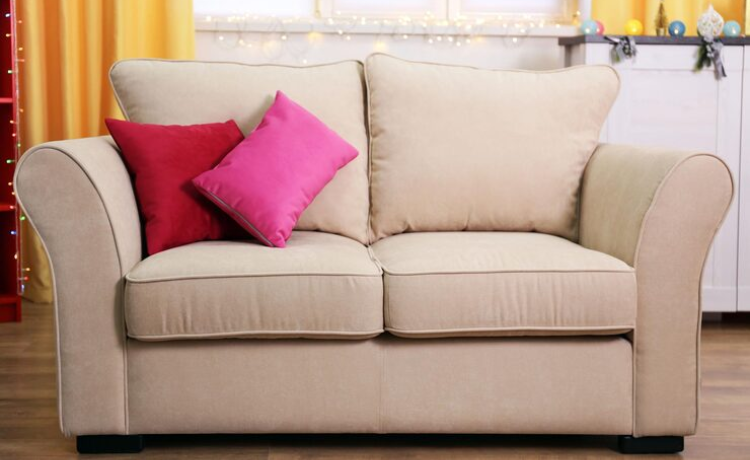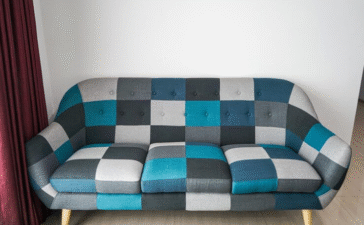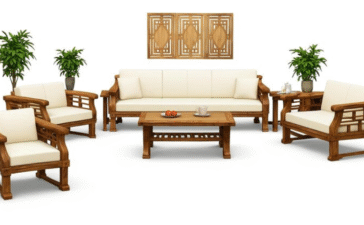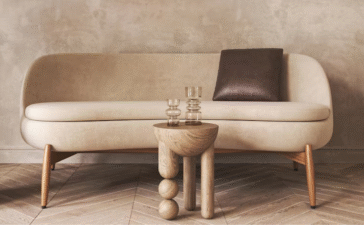A sofa is often the heart of a living room, a place for family gatherings, quiet evenings, and moments of pure relaxation. The secret to a truly great sofa isn’t just its style or color; it’s the cushioning. The right cushioning sofa provides the perfect balance of comfort, support, and durability, turning a simple piece of furniture into your favorite spot in the house.
Choosing a sofa is a significant investment in your home’s comfort and aesthetic. While looks are important, the internal components, particularly the cushioning, determine how the sofa feels and how well it stands up to daily use. This guide offers an in-depth look at sofa cushioning, drawing on expert insights to help you understand the materials, evaluate your options, and select a sofa that will provide lasting comfort for years to come.
1. Understanding cushioning sofa: Types & Materials
The cushioning is the core of your sofa’s comfort system. Its primary role is to provide a supportive yet comfortable surface that distributes weight evenly and returns to its original shape after use. Let’s explore the most common materials used.
Types of Cushioning Materials
Foam Cushions: This is the most common type of cushion fill. Foam comes in various densities, and higher density foam generally indicates better quality and longevity. High-resilience (HR) foam is a durable and supportive choice that bounces back quickly. While it can feel firm initially, it offers excellent support.
Down-Filled Cushions: For a truly luxurious, sink-in feel, nothing beats down or feather-filled cushions. These cushions are incredibly soft and plush, but they require regular fluffing to maintain their shape and prevent clumping. They are often found in high-end sofas and may be combined with foam cores for added structure.
Fiberfill Cushions: Polyester fiberfill is a synthetic, budget-friendly alternative to down. It provides a soft, cushy feel but can flatten and lose its shape more quickly than foam. It’s often used for back cushions and decorative pillows.
Memory Foam: Originally developed by NASA, memory foam contours to your body’s shape, offering personalized comfort and pressure relief. It’s an excellent choice for those who need extra support, as it distributes weight evenly. Memory foam cushions are often a foam core wrapped in a memory foam layer.
Latex Cushions: Natural latex is a durable, resilient, and eco-friendly option. It offers a bouncy, supportive feel that is less contouring than memory foam. Latex is also naturally hypoallergenic and resistant to mold and dust mites, making it a great choice for allergy sufferers.
2. How to Choose the Best Cushioning Sofa
Selecting the right cushion comes down to personal preference and lifestyle. Consider how you use your sofa. Do you prefer to sit upright with good posture, or do you enjoy sinking into a soft, plush surface for lounging and napping?
Factors to Consider
Sitting Posture and Comfort: If you need firm support for your back, a high-density foam or latex cushion is an ideal choice. For a more relaxed, “sink-in” feeling, down-filled or memory foam cushions offer superior softness and pressure relief.
Cushion Depth: Deeper seats encourage lounging, while shallower seats support a more upright posture. Test out different depths to see what feels most comfortable for your height and seating habits.
Durability and Maintenance: Down cushions require frequent fluffing, while foam and latex are virtually maintenance-free. Memory foam retains its shape well but can be sensitive to temperature. Consider how much time you’re willing to dedicate to upkeep.
Buying Tips from Experts
When testing sofas, don’t just sit on the edge. Sit as you would at home lounge, lie down, and curl up. A quality cushion should feel supportive without being hard and should return to its shape quickly after you get up.
3. Comfort vs. Durability: What to Prioritize
The ultimate goal is to find a sofa that is both comfortable and durable. A cushion that feels great in the showroom but sags after a year is a poor investment.
How to Assess Durability
The key indicator of foam durability is its density rating. A density of 1.8 pounds per cubic foot is standard, but high-quality sofas will have foam with a density of 2.0 to 2.5. For down cushions, check the fill power and the quality of the casing, which should be tightly woven to prevent feathers from poking through. One of the most obvious signs of wear is sagging cushions that no longer provide support.
Best Cushioning sofa for Long-Term Comfort
For lasting support, high-density foam or memory foam combinations are often recommended. These materials are engineered to withstand years of use without significant compression. A foam core wrapped in down or fiberfill can also offer a good balance of durability and softness.
4. Cushioning for Different Sofa Styles
The type of sofa you choose will also influence your cushioning options.
Sectional Sofas: Many sectionals offer customizable cushion fills, allowing you to mix and match materials for different seats. You might prefer a firmer cushion for the main seating area and softer cushions for a chaise lounge.
Reclining Sofas: Recliners benefit from an ergonomic cushioning sofa that supports the body in various positions. Memory foam and high-resilience foam are excellent choices for providing adaptive support as you recline.
Loveseats and Sofas with Removable Cushions: Removable cushion covers are a major advantage for cleaning and maintenance. They allow you to easily fluff the cushions, rotate them for even wear, and clean the covers separately.
Deep Cushions: Deep-seated sofas are designed for ultimate relaxation. They often feature plush, overstuffed cushions, making them perfect for lounging, napping, and movie marathons.
5. Maintenance and Care of Sofa Cushions
Proper care will extend the life of your cushions and keep them looking and feeling their best.
Keeping Cushions Fluffy and Supportive
Rotate and fluff your cushions weekly. This simple step helps them wear evenly and prevents permanent indentations. If your cushions are attached, you can still pat and reshape them to redistribute the filling.
Cleaning Tips
Always check the manufacturer’s care tag before cleaning. For removable covers, machine washing on a gentle cycle or dry cleaning is often recommended. For foam, down, or fiberfill cushions themselves, spot cleaning with a mild detergent and water is usually the best approach. Let them air dry completely before putting the covers back on to prevent mold.
Fixing Sagging Cushions
If your cushions start to sag, you can add extra batting or foam to restore their loft. For severe sagging, replacing the cushion insert or having the sofa reupholstered might be necessary.
6. Aesthetics: Choosing the Right Cushioning Sofa for Your Home
Cushioning affects not only the comfort but also the visual style of your sofa.
Plush vs. Structured Cushions: Plush, overstuffed cushions create a casual, inviting look. Tighter, more structured cushions offer a cleaner, more formal aesthetic that fits well in minimalist or traditional designs.
Design and Cushion Covers: The fabric and color of your cushion covers play a huge role in your room’s decor. Removable covers offer the flexibility to change your sofa’s look with the seasons or as your style evolves.
Luxurious Looks: The trend towards deep, plush cushions continues to grow in high-end design. These sofas make a bold statement and prioritize indulgent comfort.
7. Sustainability and Eco-Friendly Cushioning
For environmentally conscious consumers, several sustainable options are available.
Eco-Friendly Materials: Natural latex, sourced from rubber trees, is a renewable and biodegradable material. Organic cotton, wool, and recycled fiberfills are other excellent green choices.
Sustainable Manufacturing: Look for brands that prioritize sustainable practices, such as using soy-based foams instead of petroleum-based ones and obtaining certifications like CertiPUR-US®, which ensures the foam is free from harmful chemicals.
8. Expert Recommendations and Top Brands
Many brands are known for their superior cushioning. La-Z-Boy is famous for its comfortable reclining sofas, while brands like IKEA offer affordable options with decent foam quality. High-end brands often use premium materials like down blends and high-resilience foam for exceptional comfort and longevity. Always check customer reviews and test sofas in person to find what works best for you.
Also Read: “french country sofa“
Your Perfect Sofa Awaits
Choosing the right cushioning sofa is a decision that balances personal comfort, long-term durability, and aesthetic taste. By understanding the different materials and considering your lifestyle, you can select a sofa that not only looks great but also serves as a comfortable sanctuary in your home. Take your time, do your research, and invest in quality. Your future self will thank you.
Frequently Asked Questions (FAQ)
How can I tell if my sofa cushions need replacing?
The most obvious signs are visible sagging, indentations that don’t bounce back, and a noticeable lack of support when you sit. If you feel the frame through the cushion or if the cushion appears compressed and flat, it’s likely time for a replacement.
What is the best cushion material for sitting for long periods?
For extended periods of sitting, a cushion that offers both support and pressure relief is ideal. High-density foam combined with a layer of memory foam is an excellent choice. This combination prevents you from “bottoming out” while contouring to your body to reduce pressure points. Latex is another great option due to its resilient and supportive nature.
Can I change the cushions on my existing sofa?
Yes, in most cases. If your sofa has removable cushions, you can easily buy new inserts. Many companies specialize in custom-cut foam and other fillings to fit your existing cushion covers. This is a cost-effective way to refresh your sofa’s comfort and appearance without buying a new piece of furniture.
What is the lifespan of memory foam cushions?
High-quality memory foam cushions can last for 7 to 10 years or even longer with proper care. The lifespan depends on the foam’s density and how frequently the sofa is used. Rotating the cushions regularly can help extend their life by ensuring even wear.












